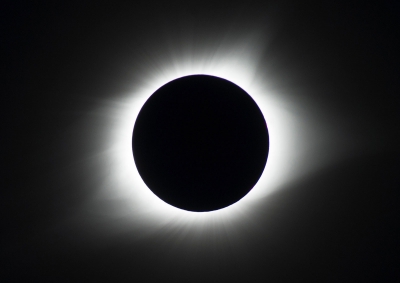
In most calendar years there are two lunar eclipses; in some years one or three or none occur. Solar eclipses occur two to five times a year, five being exceptional; there last were five in 1935, and there will not be five again until 2206. The average number of total solar eclipses in a century is 66 for Earth as a whole.
It is rare to have seven eclipses in one calendar year, however. The last time was 1982 and the next time will be 2038. Any calendar year presenting the maximum seven eclipses must have the first eclipse coming in early January, in order to leave enough room for the seventh eclipse to take place in late December. Then the middle part of the year has to stage three eclipses within the framework a single lunar month – the period of time between successive new moons or full moons. The lunar (or synodic) month has a mean duration of 29.53059 days.
If there are so many eclipses in a single year, why don’t we see more eclipses? In fact, when an eclipse occurs in your area, it’s a fairly rare event! To see a total solar, you have to be located along a narrow path on Earth’s surface, the path taken by the moon’s shadow as it sweeps across Earth. At such times, those outside the shadow path – but still near it – can see a partial solar eclipse.
However, whenever two solar eclipses occur in one lunar month, there are never two total solar eclipses in a single lunar month. Both are very shallow partial solar eclipses. Moreover, one of these solar eclipses takes place in the Arctic region of the globe while the other happens in the Antarctic. In other words, very few people are in a position to witness either one of the two shallow solar eclipses that occur in one lunar month.
Picture Credit : Google




